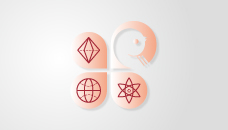ZHANG Zhi-wei, QIU Rong, YAO Yin-xu, WAN Qing, PAN Gao-wei, SHI Jin-fang. Measurement and Analysis of Uranium Using Laser-Induced Breakdown Spectroscopy[J]. Spectroscopy and Spectral Analysis, 2023, 43(1): 57
Search by keywords or author
- Spectroscopy and Spectral Analysis
- Vol. 43, Issue 1, 57 (2023)
Abstract

Set citation alerts for the article
Please enter your email address



